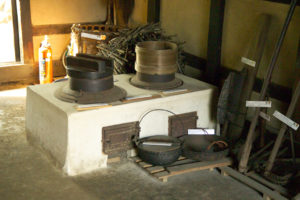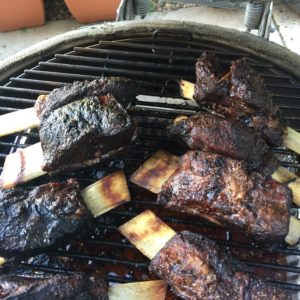What is a Kamado?
When I talk to friends and family that are not familiar with the BBQ scene the first question I get asked is what is a Kamado Joe? My simple and smartarse answer is the best damn BBQ in the world, wait till you taste this steak (or insert whatever you are cooking). And this is partly correct, but there is a LOT of really good BBQ’s and it is a case of “horses for courses”. In my case the Kamado style cooker suited my goals, here’s a link to how and why I bought a Kamado.
I may be a little bias to the Kamado style cooker as it is the first charcoal BBQ that I have owned and my experience with other brands and types at this point in my apprenticeship is limited. I do plan on expanding my limited experience in the future, I dream of an outdoor cooking setup that has one of everything, may have to win the lotto first.
Of the many forums, Facebook groups and Instagram there is more than enough inspiration to want to expand your capabilities.
History of the Kamado

Wikipedia states that the name kamado is the Japanese word for “stove” or “cooking range.” Literally, it means “place for the cauldron.” It was the movable kamado called “mushikamado” came to the attention of Americans after the Second World War and is now found in the US as a Kamado-style cooker or barbecue grill. The mushikamado is a round clay pot with a removable domed clay lid and is typically found in Southern Japan.
The Mushikamado
Mushikamado is designed to steam rice and is used by Japanese families for ceremonial occasions. Fuels may include charcoal and dry twigs or straw, and wood among others.
Mushikamado, or movable Kamado-style cookers are now made from a variety of materials including high fire ceramics, refractory materials, double wall insulated steel, traditional terra cotta, and a mix of Portland cement and crushed lava rock. Outer surfaces also vary from a high gloss ceramic glaze, paint, a textured stucco-like surface and ceramic tiles. Modern ceramic and refractory materials decrease cracking – a common fault in the original Japanese design. Portland cement is still associated with cracking problems. In addition to the outer ceramic shell, there is also a ceramic or stainless steel bowl inside the unit to hold charcoal. There is a draft opening in the lower side of the unit to provide air to the charcoal, as well as a controllable vent in the top of the dome lid for air to exit the cooker. Temperature is controlled by adjusting these two vents. One or more grids are suspended over the fire to provide the cooking surface(s) for the food. Finally, most Kamado-style cookers have a hole drilled in the lid to allow the insertion of the stem of a dial-type thermometer for monitoring the cooking temperature of the cooker. The high-end kamados have layers of insulation which create low-airflow cooking conditions and are self-opening. Digital temperature control devices can be installed using a small blower to regulate airflow.
Fuel
Mushikamado grills are generally fuelled by charcoal although some attempts have been made to fire them with gas, electricity, or pellets. One of the claims for ceramic construction is that there is no flavour contamination (metallic taste) to the cooked food and, for the same reasoning, lump wood charcoal is the preferred choice for modern kamado cooking. Lump charcoal creates little ash. The alternative charcoal briquettes contain many additives that can contaminate the flavour of the food. Lump wood charcoal can be manufactured in an environmentally sustainable manner using the technique of coppicing.
Uses
Mushikamados are versatile. They are used for grilling and smoking. Flat-bread such as pizza can be cooked on a flat ceramic or stone tray (pizza stone) and bread can also be baked. This is by virtue of the heat retention properties of the ceramic shell with temperatures up to 750 °F (400 °C). Precise control of airflow (and thus temperature) afforded by the vent system means Kamado-style cookers are much like wood-fired ovens and can be used to roast and bake. Kamados may also have a rotisserie cradle for crisping the skin of birds and uniform browning.
*Source Wikipedia.com https://en.wikipedia.org/wiki/Kamado
Today's Kamado
Today there are a number of brands that have their own version of a Kamado cooker, Kamado Joe, Komodo Kamado, Primo, Grill Dome, Big Green Egg, CharGriller and Dragon Kamado to name just a few. And like any hobby that has an enthusiastic group of followers, people tend to take sides and become very loyal to one brand or another forming “gentle” rivalries. It’s a case of my Kamado is better than your Kamado. I guess this is somewhat harmless and generates even more interest within the niche of the hobby.
Whatever your choice of cooker is , get out there fire it up and cook.
Further Reading
Don’t forget to stop by the shop for the latest accessories for your grill
You may also wish to subscribe for the latest posts to be delivered to your inbox.



